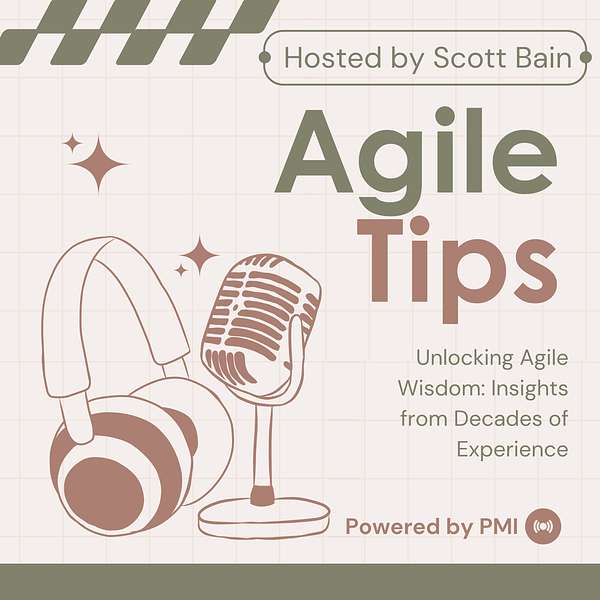
Agile Tips
Unlocking Agile Wisdom: Insights from Decades of Experience. Scott Bain is a 44+ year veteran of systems development.
Agile Tips
#45-Implications of the Agile Manifesto
In this episode we will examine the roots of the Agile Movement, and delineate the Agile Manifesto that came from those roots. This will begin a series of five podcasts that point out the implications of each item in this manifesto.
Implications of the Agile Manifesto
The agile movement has interesting roots. To the best of my knowledge, it began in the technical world before it became a project management paradigm. It all has to do with something called eXtreme Programming, or "XP".
XP came along in the mid 1990's when a group of technical thought leaders including Kent Beck, Ron Jeffries, Ward Cunningham, and Robert Martin (to name a few) made an observation about software development for small systems, or PC's, in the business environment. The PC had entered the business world with the launch of IBM's first personal computer in 1981, and so by the 90's it was possible to look at the software industry in a business context to determine what was working and what was not.
They called it "extreme" because the thought experiment was this: If something is valuable and contributes to success, then we should do more of it, essentially "turning it up to ten". On the other hand, if something has not proved itself to be of value, then we should stop doing it entirely, or "turn it down to zero". The results of this approach are interesting and led to the emergence of test-driven development (tests are good, so let’s do testing all the time) and the abandonment of the waterfall (large discrete phases don't work, do let's stop doing that entirely).
Whether this turned out to be a good way to approach business automation is debatable, and certainly controversial, but in my opinion it was a very healthy moment overall because it caused us to question our assumptions and open our minds to new ideas, ideas that might not be as extreme but that we might not have considered otherwise. I submit that more moderate approaches, like Scrum and Kanban, would have been much less likely to exist without the influence of XP.
Eventually, this lead to the notion of an agile approach and also to a statement of principles which they termed, The Agile Manifesto. It was a delineation of what should be valued, emphasized, and committed to.
It stated:
"We are uncovering better ways of developing software by doing it and helping others do it. Through this work we have come to value:
- Individuals and interactions over processes and tools
- Working software over comprehensive documentation
- Customer collaboration over contract negotiation
- Responding to change over following a plan
That is, while there is value in the items on the right, we value the items on the left more."
I think there are interesting implications to the product development industry of today for each of these value statements. I also don’t think this should be limited to software alone, which is why Disciplined Agile exists at PMI.
I will take these four points on individually over the next few agile tips entries. Stay tuned!